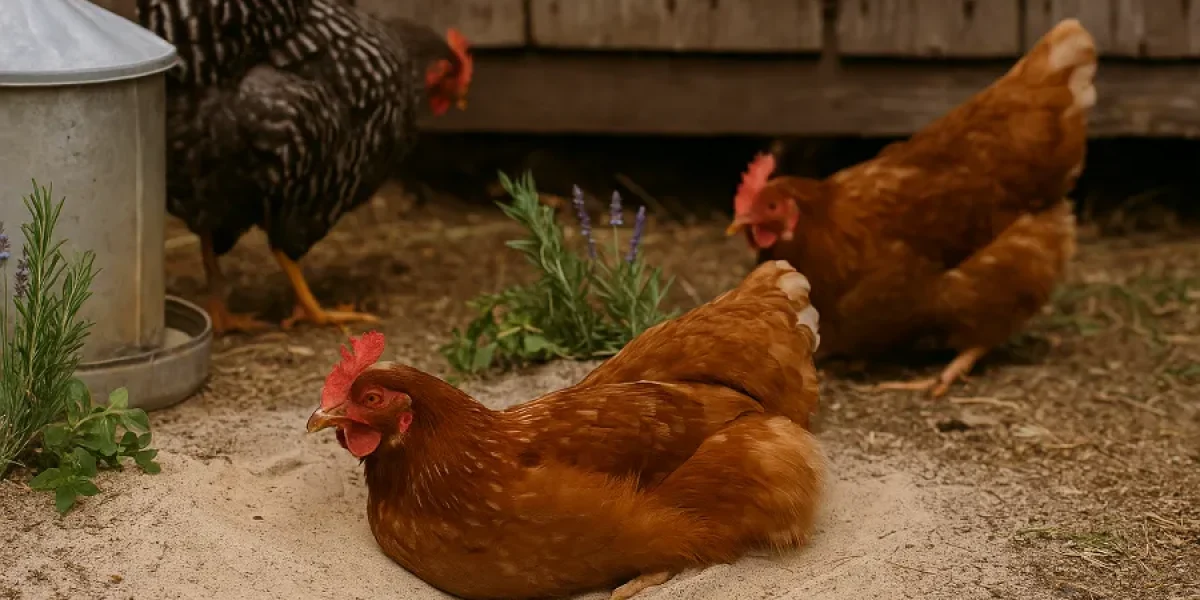When I first noticed tiny red specks crawling under my hens’ wings, I realized I was dealing with chicken mites — and it scared me. Having raised backyard chickens for years, I never expected to face a full-blown parasite battle, but here we were. What saved the day was leaning into natural ways to control mites and lice in backyard chickens … safe, organic, plant-based, and gentle on the flock. In this post I’ll walk you through what worked for me (and still does) — from budget-friendly DIYs to premium eco-solutions.
Backyard Chickens: Our Flock and My Wake-Up Call
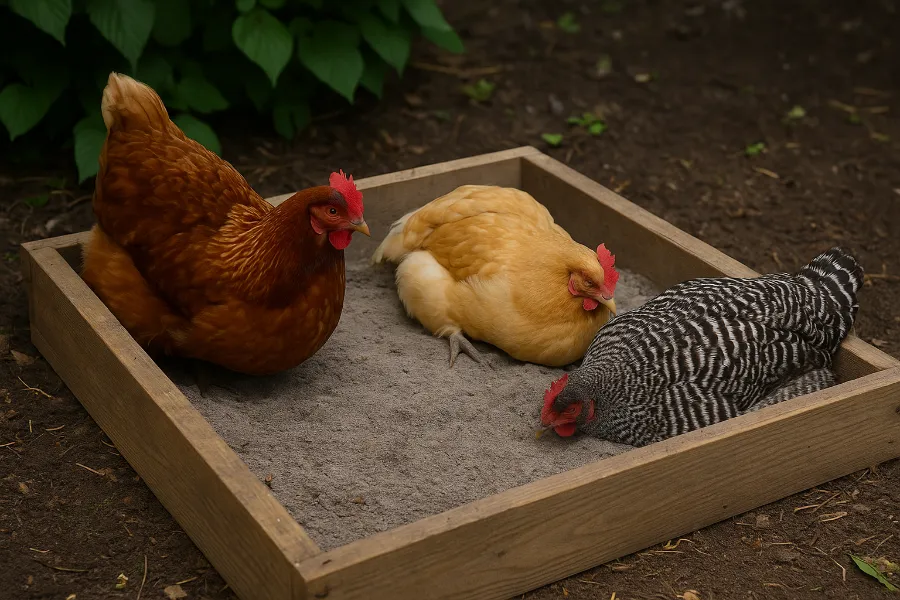
If you’re raising backyard chickens, you probably know how uplifting it is to collect fresh eggs and hear the chattering at dawn. I felt exactly that way until I spotted a hen with missing feathers around the vent. That’s when I knew: internal comfort isn’t enough — your coop, your dust bath, your routine all matter. With our flock thriving, the idea of an infestation freaked me out. My mission became protecting them the natural way.
Chicken Lice: A Different Beast from Mites
While I obsessively focused on chicken mites, I learned quickly that chicken lice present a different set of challenges. Lice live on the bird, chew through feathers, and irritate the skin, whereas mites often hide in the coop and feed at night. If your hens are itchy, pulling feathers, or you spot tiny eggs clustered at the base of feathers — lice could be in play. The good news? Many of the natural methods I used for mites also help against lice.
Organic Pest Control for Our Coop
When I talk about organic pest control, I mean methods that involve no harsh chemicals, no pesticide overload, and no compromising the environment around my chickens. I wanted the eggs they laid to be clean, the soil beneath the coop to remain healthy, and the neighbors to green-thumb without worries. From herbs to dust baths, it’s possible to build a robust anti-parasite system that respects nature.
Chicken Care: Holistic from the Inside Out
In my setup, chicken care isn’t just about feed, water, and shelter. It’s about anticipating problems, giving them healthy outlets, and treating them as living beings with preferences. A hen that’s comfortable, confident and active is less likely to suffer from severe mite or lice pressure. I started viewing coop hygiene, dust baths, nutrition, and even herb gardens as part of their overall care plan.
Chicken Coop Cleaning: More Than Just Sweeping
Let me be honest: I used to dread chicken coop cleaning. Now I see it as a key defense line. Mats of old bedding, damp corners, cobwebbed roosts — those are invitation letters for parasites. My routine now includes a weekly or bi-weekly deep clean: remove bedding, wash surfaces (I’m a big fan of vinegar + water), scrub roosts, let sunlight blast in, and sprinkle natural powders before new bedding goes in. It may take some elbow grease, but the payoff is huge.
Diatomaceous Earth: My Go-To for Chicken Mites
Ah, good old diatomaceous earth (DE). When I discovered how cheap and effective it was for controlling mites, I felt validated. When I say “using diatomaceous earth for chicken mites,” what I mean is this:
- Buy food-grade DE only (don’t mess with pool grade).
- Lightly sprinkle under bedding, in cracks, in nesting boxes, and even on top of the dust bath mixture.
- For birds with visible mite pressure, I’d dust them (very lightly) under the wings and around the vent — always with caution.
Why I love it: Low cost, chemical-free, and safe for my girls as long as I apply it responsibly. Advantage: It literally dehydrates the parasite exoskeleton without harming the flock.
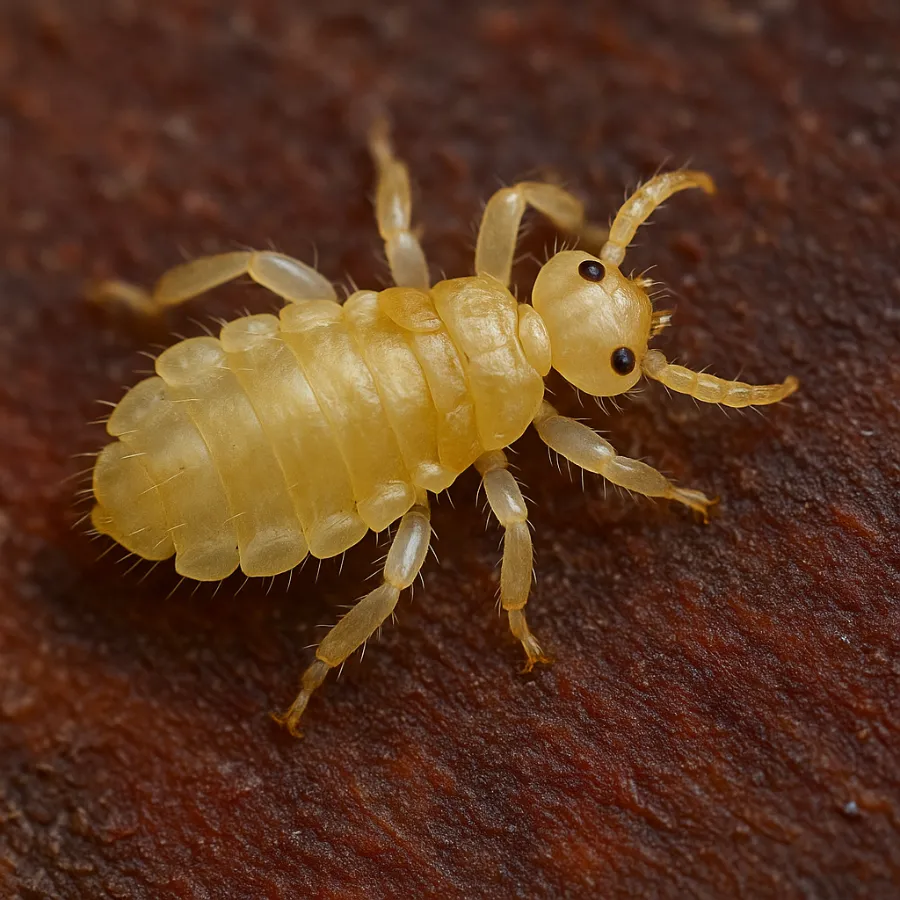
Dust Bath Chickens: Let Them Help Themselves
If you have chickens, you must give them a space to roll and fluff in dust. That’s why I focus on how to make a chicken dust bath that really works. My mix is simple: 2 parts dry soil/sand, 1 part DE, 1 part wood ash (from untreated wood), and sometimes a few dried herbs like mint or lavender. I keep this dry, shaded, and accessible.
When I started doing this, I noticed feathers got cleaner, the hens cheered up, and I saw fewer red specks — a clear sign the dust bath was working. Allowing your flock to do nature’s cleaning for themselves is a brilliant move.
Natural Pest Control: Building Layers of Protection
Here’s the cool part: no one method will guarantee 100% success. What works is natural pest control through layering: dust baths, DE, herbs, coop cleaning, dietary tweaks. When I combined multiple strategies, I stopped worrying every time I saw a scratch or feather missing.
I sprayed herbal solutions, added garlic to feed, rinsed out nesting boxes with apple cider vinegar, and never relied on a single fix. That’s what I mean by robust, all-around care.
Poultry Mites: Knowing the Enemy
In chicken keeping circles, “poultry mites” is the more formal term for those pesky critters. You’re looking at things like red mites, northern fowl mites, and even scaly-leg mites. These can hide in cracks, hang out in roosts, feed on blood, and totally ruin a flock if unchecked. Because they’re largely out of sight, being proactive matters a lot. I make it part of my regular inspection routine now — especially at night with a flashlight.
Diatomaceous Earth for Chicken Mites: My Detailed Approach
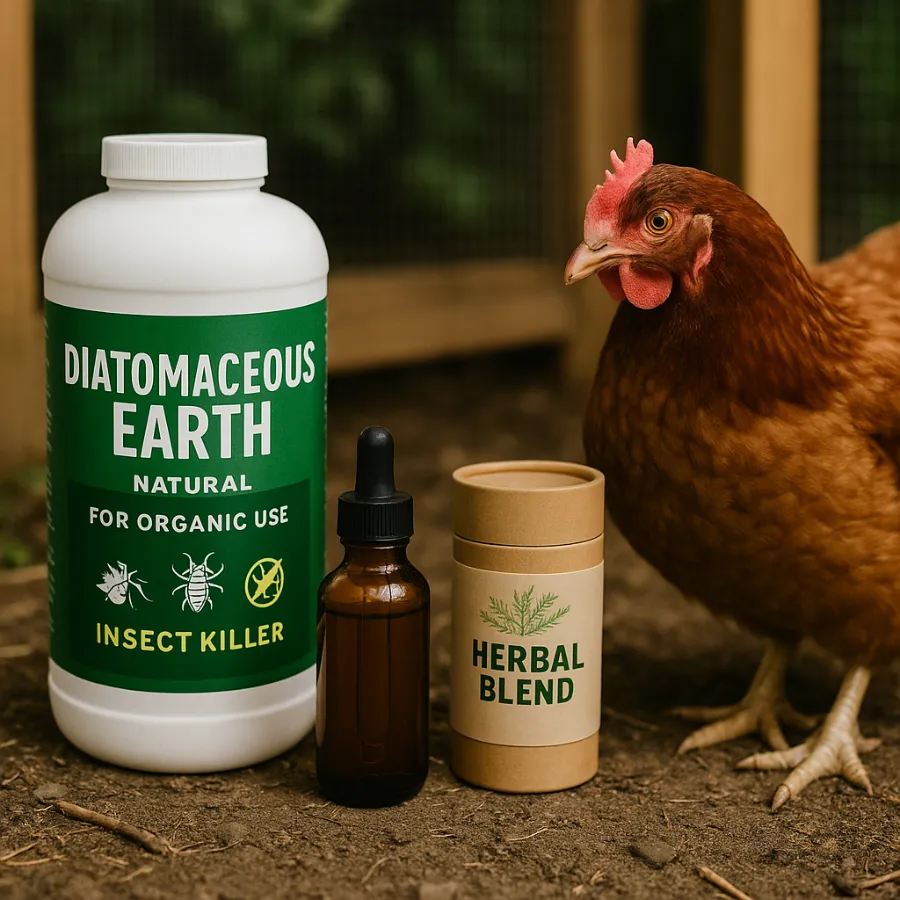
Yes, I’ve already praised DE — but let’s get into how I make it part of a full routine:
- After coop cleaning, I sprinkle DE along the walls, under roosts, and in the corners.
- In nesting boxes, I mix some into fresh bedding top-layer.
- Every 4-6 weeks, I refresh the dust bath mixture with new sand/silt + DE + ash.
- I check hens under wings for visible mites and, if needed, apply a light sprinkle of DE on the comb/vent area (avoiding eyes and sensitive skin).
Because I alternate with other treatments (herbs, neem oil), DE doesn’t become the only line of defense. It’s part of a robust system.
How to Make a Chicken Dust Bath: My Tried-and-True Recipe
Here’s the recipe I use with my flock — simple, natural, and free of chemical fuss:
Ingredients:
- 2 large buckets of dry sand or sifted soil
- 1 bucket of wood ash (from untreated wood)
- 1 bucket of food-grade DE
- A handful of dried herbs: mint, lavender, rosemary (optional but nice)
Instructions:
- Choose a spot that’s sunny but offers some shade.
- Fill the large container or shallow pit with the mix.
- Let the hens access it daily — they’ll jump into it, fluff themselves, and you’ll notice them returning.
- Once a month, rake through the dust bath mix and add dry fresh sand/ash/DE to maintain dryness and effectiveness.
The beauty of this? Cheap, natural, and the hens love it (which means they actually use it). It’s a proactive move in natural pest control for my flock.
Advantage of This Natural, Plant-Based, Safe Approach
Here’s why I stick with it:
- Non-toxic: No chemical residues on eggs or in the soil beneath the coop.
- Affordable options: From wood ash (free) to herbs and DE (low cost) to neem oil (mid cost) — you pick your budget.
- Holistic health: My hens look happier, their feathers sharper, and the coop smells fresher.
- Prevention focus: Rather than only reacting to infestations, I maintain an environment where parasites struggle to gain ground.
- Sustainable: If you’re raising chickens naturally, this method aligns with your whole ethos — plant-based, organic, safe.
My Budget Breakdown: From Cheapest to Premium
- Budget-friendly: Wood ash (free from your fireplace), garlic in feed ($1–$5), dust bath you build from sand/silt.
- Mid-range: Food-grade DE ($10-$25), dried herbs for coop ($5-$20), apple cider vinegar ($3-$8).
- Premium: Neem oil sprays ($10-$30), essential oil blends, predator mites (if you want to go high-end).
Truthfully, you don’t need the premium to do well. But having the option is nice if you’re dealing with a stubborn infestation.
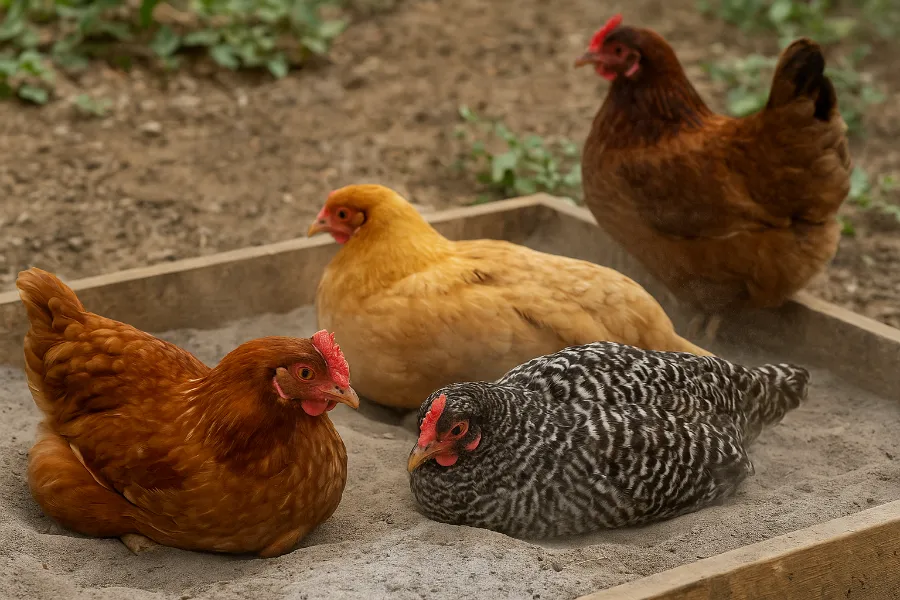
Final Thoughts: Keep Chicken Mites at Bay Naturally
When the tiny crawlies show up, it can feel overwhelming. But having walked the path, I assure you: by focusing on chicken mites with a natural, layered approach, you can keep your flock comfortable, produce healthy eggs, and maintain a beautiful coop.
For all the joys of raising backyard chickens, dealing with parasites doesn’t have to be a constant worry. With the right attitude, a bit of effort, and a blend of organic pest control, chicken care, chicken coop cleaning, dust baths, DE, and herbs, you’ll build a resilient system. Your hens will thank you with their bright eyes, healthy feathers, and plenty of good-quality eggs.
Here’s to happy hens and a mite-free coop!
FAQs
Chicken mites are tiny blood-sucking parasites that irritate chickens, causing feather loss, stress, and reduced egg production. They often hide in coop cracks and come out at night to feed.
Look for restless behavior, bald spots, pale combs, or clusters of tiny bugs under the wings or near the vent. Mites feed on blood, while lice live on feathers and skin debris.
Use diatomaceous earth, herbal sprays, neem oil, and wood ash dust baths. Regular coop cleaning and adding garlic or apple cider vinegar to your chickens’ routine also help prevent infestations.
Yes, food-grade diatomaceous earth is safe when used properly. It kills mites naturally by dehydrating them but should be applied carefully to avoid dust inhalation.
Clean your coop at least once every one to two weeks. Replace bedding, scrub roosts with vinegar water, and sprinkle DE or wood ash before adding fresh bedding.
Absolutely. Herbs like mint, lavender, thyme, and rosemary repel parasites naturally while keeping the coop smelling fresh and stress-free for your flock.
Yes, but they may require layering multiple approaches — DE, neem oil, dust baths, and deep cleaning. For persistent cases, combine natural remedies with biological options like predator mites.

